Fatty Acid
Whatsapp Order
Fatty acids are a group of carboxylic acids consisting of long aliphatic chains, which can be either saturated or unsaturated. They are typically derived from natural fats and oils through hydrolysis or saponification and appear as colorless to pale yellow liquids or solids depending on the chain length and degree of saturation. Fatty acids are fundamental building blocks in biochemistry and industrial chemistry, serving as raw materials in the manufacture of soaps, detergents, lubricants, cosmetics, plastics, and food additives. Their amphiphilic nature—containing both hydrophilic (carboxyl group) and hydrophobic (alkyl chain) components—makes them versatile for various chemical and industrial applications.
Description
Table of Contents
Toggle
Fatty Acid Uses
Primary Uses
- Soap and Detergent Industry
- Serve as key raw materials in soap making through saponification with alkalis.
- Used in production of synthetic detergents and surfactants due to their excellent emulsifying and cleaning properties.
- Cosmetics and Personal Care
- Incorporated in creams, lotions, and hair care products as emollients, moisturizers, and conditioning agents.
- Act as emulsifiers and stabilizers in formulations.
- Provide texture, spreadability, and skin compatibility.
- Lubricants and Greases
- Used in manufacturing metalworking lubricants, greases, and release agents.
- Provide lubricity and corrosion protection in mechanical systems.
- Food Industry
- Employed as food additives (e.g., emulsifiers, stabilizers).
- Used in production of flavorings and preservatives.
- Serve as precursors to edible fats and oils modification.
- Plastics and Polymers
- Used as plasticizers and additives in polymer production.
- Serve as raw materials in the synthesis of bioplastics and resins.
- Pharmaceuticals
- Utilized as excipients in topical formulations and capsules.
- Serve as intermediates for synthesis of medicinal compounds.
Secondary Uses
- Textile Industry
- Used as lubricants and softeners during fiber processing and finishing.
- Agriculture
- Incorporated in pesticide formulations as adjuvants and wetting agents.
- Paints and Coatings
- Used as additives to improve flow, drying properties, and surface finish.
- Rubber Industry
- Serve as processing aids and vulcanization accelerators.
KEY PRODUCT FEATURES
1. Basic Identification Attributes
- Chemical Name (IUPAC): Fatty acids (general formula: R–COOH, where R is a hydrocarbon chain)
- Common/Trade Name: Fatty Acid
- CAS Number: Varies widely by specific fatty acid (e.g., Palmitic acid 57-10-3, Oleic acid 112-80-1)
- HS Code: 3823.11.00 (for fatty acids and their salts and esters)
- Molecular Formula: Variable (e.g., C16H32O2 for Palmitic acid)
- Synonyms: Carboxylic acids, aliphatic acids
2. Physical & Chemical Properties
- Physical State: Liquid or solid (wax-like) depending on chain length and saturation
- Color: Colorless to pale yellow
- Odor: Characteristic mild to fatty odor
- Melting Point: Varies from below 0°C (unsaturated fatty acids) to >60°C (saturated fatty acids)
- Boiling Point: Typically >200°C (decomposes before boiling for longer chains)
- Solubility: Insoluble in water; soluble in organic solvents and oils
- pH: Acidic (due to carboxyl group)
- Stability: Stable under normal conditions; prone to oxidation in presence of air/light (especially unsaturated types)
3. Safety & Hazard Attributes
- Hazard Class (GHS): Generally not hazardous; slight irritant to skin and eyes
- Toxicity: Low acute toxicity; safe for use in food and cosmetics at regulated levels
- Exposure Limits: No specific occupational exposure limits; use standard industrial hygiene practices
4. Storage & Handling Attributes
- Storage Conditions: Store in cool, dry, well-ventilated area, away from direct sunlight and sources of ignition
- Container Type: Steel drums, plastic containers, or bulk tanks
- Shelf Life: Typically 12–24 months depending on storage and antioxidant presence
- Handling Precautions: Avoid prolonged skin contact and inhalation of vapors or aerosols
5. Regulatory & Compliance Attributes
- FDA Status: Generally recognized as safe (GRAS) when used in food and cosmetics
- REACH Registration: Registered under EU chemical regulations for industrial and consumer uses
- Compliance: Meets applicable standards for food, pharmaceutical, and cosmetic grade fatty acids
6. Environmental & Health Impact
- Biodegradability: Readily biodegradable under aerobic conditions
- Ecotoxicity: Low aquatic toxicity at normal use concentrations
- Bioaccumulation: Not expected to bioaccumulate
- Carcinogenicity/Mutagenicity: Not classified as carcinogenic or mutagenic
SAFETY HANDLING PRECAUTIONS
Safety Handling Precautions
- Personal Protective Equipment (PPE):
- Protective gloves (nitrile or latex)
- Safety goggles or face shield
- Protective clothing if handling in bulk or molten form
- Respiratory protection if aerosols or vapors are generated
- Handling Guidelines:
- Use in well-ventilated areas
- Avoid inhalation of vapors or aerosols and prolonged skin contact
- Prevent contamination of food or feed materials when used in industrial settings
- Storage Measures:
- Keep containers tightly closed when not in use
- Store away from strong oxidizers, acids, and bases
- Protect from moisture and excessive heat
- Hygiene Practices:
- Wash hands after handling
- Avoid eating, drinking, or smoking in handling areas
- Clean equipment and surfaces regularly
First Aid Measures
- Inhalation:
- Move to fresh air; seek medical attention if respiratory irritation occurs
- Skin Contact:
- Wash affected area with soap and water; remove contaminated clothing; seek medical attention if irritation persists
- Eye Contact:
- Rinse eyes with plenty of water for at least 15 minutes; seek medical advice if irritation continues
- Ingestion:
- Rinse mouth; do not induce vomiting; seek medical attention if large quantities ingested
Firefighting Measures
- Fire Hazards:
- Combustible; can burn with a yellow smoky flame producing carbon monoxide and dioxide
- Extinguishing Media:
- Use foam, dry chemical, carbon dioxide (CO₂), or water spray
- Special Precautions:
- Firefighters should wear self-contained breathing apparatus and protective clothing
- Decomposition Products:
- Carbon monoxide, carbon dioxide, and potentially irritating fumes
Related products
Almond Wax
Almond Wax is a natural, plant-based wax derived from the hydrogenation of almond oil (Prunus amygdalus dulcis). It is a creamy to white, semi-solid wax with a mild, nutty scent and excellent emollient properties. Almond Wax is rich in fatty acids and has a smooth, soft texture, making it ideal for use in cosmetic, personal care, and candle formulations.
Due to its gentle consistency, skin-friendly profile, and moisturizing capabilities, Almond Wax is widely used in body butters, balms, lip care products, massage bars, and artisan soaps. It functions as a natural alternative to petroleum-based waxes and provides structure, viscosity, and glide to formulations. It also finds application in soft wax blends for natural candle products.
Cetyl Alcohol
Cetyl Alcohol, also known as 1-Hexadecanol or Palmityl Alcohol, is a fatty alcohol derived primarily from natural sources such as palm oil and coconut oil. It appears as a waxy, white to pale yellow solid with a faint fatty odor. Cetyl Alcohol is widely used in cosmetic, pharmaceutical, and industrial formulations due to its emollient, emulsifying, thickening, and stabilizing properties. It helps improve texture, consistency, and moisturizing effects in personal care products. Cetyl Alcohol is compatible with many ingredients, making it a versatile multifunctional ingredient.
Cocoa Butter
Cocoa Butter, also known as Theobroma oil, is a pale-yellow, edible fat extracted from cocoa beans, primarily from Theobroma cacao. It has a smooth, creamy texture and a mild, characteristic chocolate aroma. Cocoa Butter is solid at room temperature but melts near body temperature, which gives it a luxurious feel when applied to skin or consumed. It is highly valued for its emollient, moisturizing, and protective properties. Cocoa Butter is widely used in cosmetics, pharmaceuticals, food, and confectionery industries. Its stable composition rich in fatty acids such as stearic, palmitic, and oleic acids imparts excellent oxidative stability and a long shelf life.
Dimethicone Silicon Oil
Dimethicone Silicon Oil, also known as polydimethylsiloxane (PDMS) or silicone oil, is a clear, odorless, and non-volatile silicone-based polymer widely used for its lubricating, anti-foaming, water-repellent, and skin-conditioning properties. It is a linear silicone polymer composed of repeating dimethylsiloxane units. Dimethicone exhibits excellent thermal stability, chemical inertness, and low surface tension, making it highly versatile in pharmaceutical, cosmetic, personal care, industrial, and food applications. It is available in various viscosities, from very low to high viscosity oils, enabling tailored formulations.
Fully Refined Paraffin Wax
Fully Refined Paraffin Wax is a highly purified, odorless, white to pale yellow wax obtained from the refining of petroleum-derived crude paraffin wax. It consists primarily of saturated hydrocarbons (alkanes) with chain lengths typically between C20 and C40. Due to its excellent chemical stability, non-toxicity, and versatility, Fully Refined Paraffin Wax is widely used across numerous industries including cosmetics, pharmaceuticals, food packaging, candle making, rubber processing, and electrical insulation. It exhibits a high melting point, low volatility, and good water resistance.
Isopropyl Myristate
Isopropyl Myristate is a clear, colorless, and oily liquid ester formed by the reaction of isopropyl alcohol and myristic acid. It has a mild, pleasant odor and excellent spreading properties. IPM is widely used in cosmetics, pharmaceuticals, and industrial applications as an emollient, solvent, and penetration enhancer due to its ability to improve texture and absorption of topical formulations.
Lanolin Anhydrous
Lanolin Anhydrous is a purified, waxy substance derived from the sebaceous glands of sheep’s wool. It appears as a yellow to amber, semi-solid wax with a characteristic mild odor. Lanolin is highly valued for its excellent emollient, moisturizing, and protective properties, making it widely used in cosmetic, pharmaceutical, and personal care formulations. The anhydrous form is free from water, which enhances its stability and shelf life, and allows it to act as a natural barrier to lock moisture into the skin.
Petroleum Jelly
Petroleum Jelly is a semi-solid mixture of hydrocarbons, originally derived from petroleum refining. It is odorless, colorless (or slightly yellow), and known for its moisturizing, protective, and lubricating properties. Widely used in cosmetics, pharmaceuticals, and industrial applications, Petroleum Jelly forms a barrier on the skin that locks in moisture and protects against irritants. The 175kg packaging is typical for bulk industrial or large-scale cosmetic use.

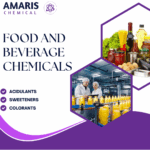
 Preservatives(food)
Preservatives(food) Flavor Enhancers
Flavor Enhancers Acidulants
Acidulants Sweeteners
Sweeteners Antioxidants
Antioxidants Colorants(food)
Colorants(food)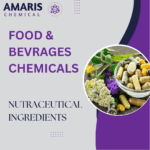 Nutraceutical Ingredients (food)
Nutraceutical Ingredients (food) Nutrient Supplements
Nutrient Supplements Emulsifiers
Emulsifiers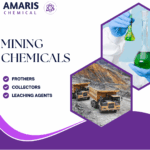
 Collectors
Collectors Dust Suppressants
Dust Suppressants Explosives and Blasting Agents
Explosives and Blasting Agents Flocculants and Coagulants
Flocculants and Coagulants Frothers
Frothers Leaching Agents
Leaching Agents pH Modifiers
pH Modifiers Precious Metal Extraction Agents
Precious Metal Extraction Agents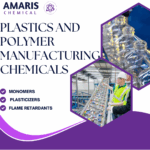
 Antioxidants(plastic)
Antioxidants(plastic) Colorants (Pigments, Dyes)
Colorants (Pigments, Dyes) Fillers and Reinforcements
Fillers and Reinforcements Flame Retardants
Flame Retardants Monomers
Monomers Plasticizers
Plasticizers Polymerization Initiators
Polymerization Initiators Stabilizers (UV, Heat)
Stabilizers (UV, Heat)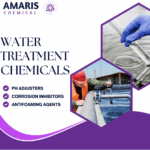
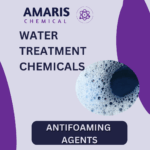 Antifoaming Agents
Antifoaming Agents Chelating Agents
Chelating Agents Coagulants and Flocculants
Coagulants and Flocculants Corrosion Inhibitors
Corrosion Inhibitors Disinfectants and Biocides
Disinfectants and Biocides Oxidizing Agents
Oxidizing Agents pH Adjusters
pH Adjusters Scale Inhibitors( water)
Scale Inhibitors( water)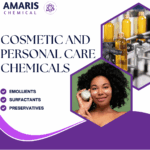
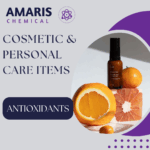 Antioxidants(cosmetic)
Antioxidants(cosmetic) Emollients
Emollients Fragrances and Essential Oils
Fragrances and Essential Oils Humectants
Humectants Preservatives
Preservatives Surfactants(cosmetic)
Surfactants(cosmetic) Thickeners
Thickeners UV Filters
UV Filters
 Fertilizers
Fertilizers Soil Conditioners
Soil Conditioners Plant Growth Regulators
Plant Growth Regulators Animal Feed Additives
Animal Feed Additives Biostimulants
Biostimulants Pesticides (Herbicides, Insecticides, Fungicides)
Pesticides (Herbicides, Insecticides, Fungicides)
 Active Pharmaceutical Ingredients (APIs)
Active Pharmaceutical Ingredients (APIs) Excipients
Excipients Solvents(pharmaceutical)
Solvents(pharmaceutical) Antibiotics
Antibiotics Antiseptics and Disinfectants
Antiseptics and Disinfectants Vaccine Adjuvants
Vaccine Adjuvants Nutraceutical Ingredients (pharmaceutical)
Nutraceutical Ingredients (pharmaceutical) Analgesics & Antipyretics
Analgesics & Antipyretics
 Analytical Reagents
Analytical Reagents Solvents(lab)
Solvents(lab) Chromatography Chemicals
Chromatography Chemicals Spectroscopy Reagents
Spectroscopy Reagents microbiology-and-cell-culture-reagents
microbiology-and-cell-culture-reagents Molecular Biology Reagents
Molecular Biology Reagents Biochemical Reagents
Biochemical Reagents Inorganic and Organic Standards
Inorganic and Organic Standards Laboratory Safety Chemicals
Laboratory Safety Chemicals Specialty Laboratory Chemicals(Special Laboratory Equipment)
Specialty Laboratory Chemicals(Special Laboratory Equipment)
 Demulsifiers
Demulsifiers Hydraulic Fracturing Fluids
Hydraulic Fracturing Fluids Scale Inhibitors(oil)
Scale Inhibitors(oil) Surfactants(oil)
Surfactants(oil) Drilling Fluids
Drilling Fluids
 Dyes and Pigments
Dyes and Pigments Bleaching Agents
Bleaching Agents Softening Agents
Softening Agents Finishing Agents
Finishing Agents Antistatic Agents
Antistatic Agents
 Admixtures
Admixtures Waterproofing Agents
Waterproofing Agents Sealants and Adhesives
Sealants and Adhesives Curing Compounds
Curing Compounds Concrete Repair Chemicals
Concrete Repair Chemicals Anti-Corrosion Coatings
Anti-Corrosion Coatings
 Surfactants(cleaning)
Surfactants(cleaning) Builders
Builders Enzymes
Enzymes Solvents (Cleaning)
Solvents (Cleaning) Fragrances
Fragrances
 Electronic Chemicals
Electronic Chemicals Catalysts
Catalysts Lubricants
Lubricants Photographic Chemicals
Photographic Chemicals Refrigerants
Refrigerants Automotive chemicals
Automotive chemicals Pyrotechnic Chemicals
Pyrotechnic Chemicals
 Biodegradable Surfactants
Biodegradable Surfactants Bio-based Solvents
Bio-based Solvents Renewable Polymers
Renewable Polymers Carbon Capture Chemicals
Carbon Capture Chemicals Wastewater Treatment Chemicals
Wastewater Treatment Chemicals
 Pigments
Pigments Solvents(paint)
Solvents(paint) Specialty Coatings
Specialty Coatings Binders/Resins
Binders/Resins Additives
Additives Driers
Driers Anti-Corrosion Agents
Anti-Corrosion Agents Functional Coatings
Functional Coatings Application-Specific Coatings
Application-Specific Coatings
 Fresh Herbs
Fresh Herbs Ground Spices
Ground Spices Whole Spices
Whole Spices Spice Blends
Spice Blends Dried Herbs
Dried Herbs
 Leavening Agents
Leavening Agents Dough Conditioners
Dough Conditioners Flour Treatments
Flour Treatments Fat Replacers
Fat Replacers Decoratives
Decoratives Preservatives(baking)
Preservatives(baking)
 Plasticizers & Softeners
Plasticizers & Softeners Reinforcing Agents
Reinforcing Agents Adhesion Promoters
Adhesion Promoters Vulcanizing Agents
Vulcanizing Agents Antidegradants
Antidegradants Blowing Agents
Blowing Agents Fillers & Extenders
Fillers & Extenders Accelerators & Retarders
Accelerators & Retarders


























